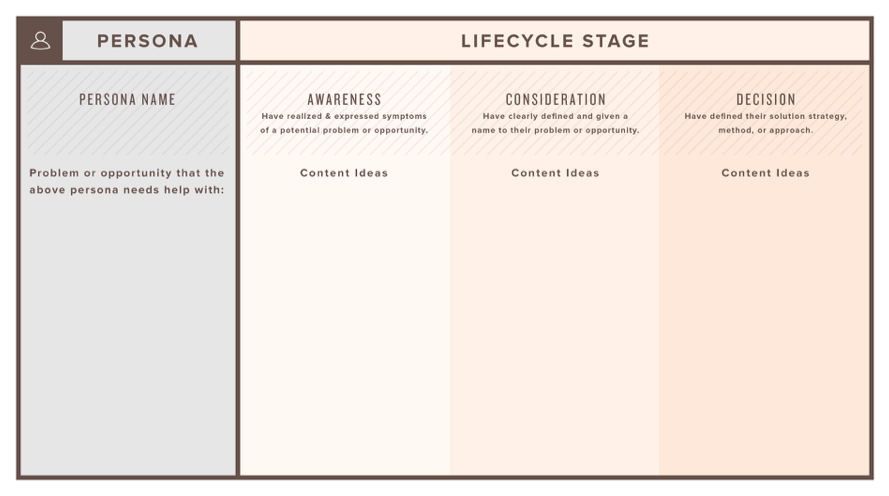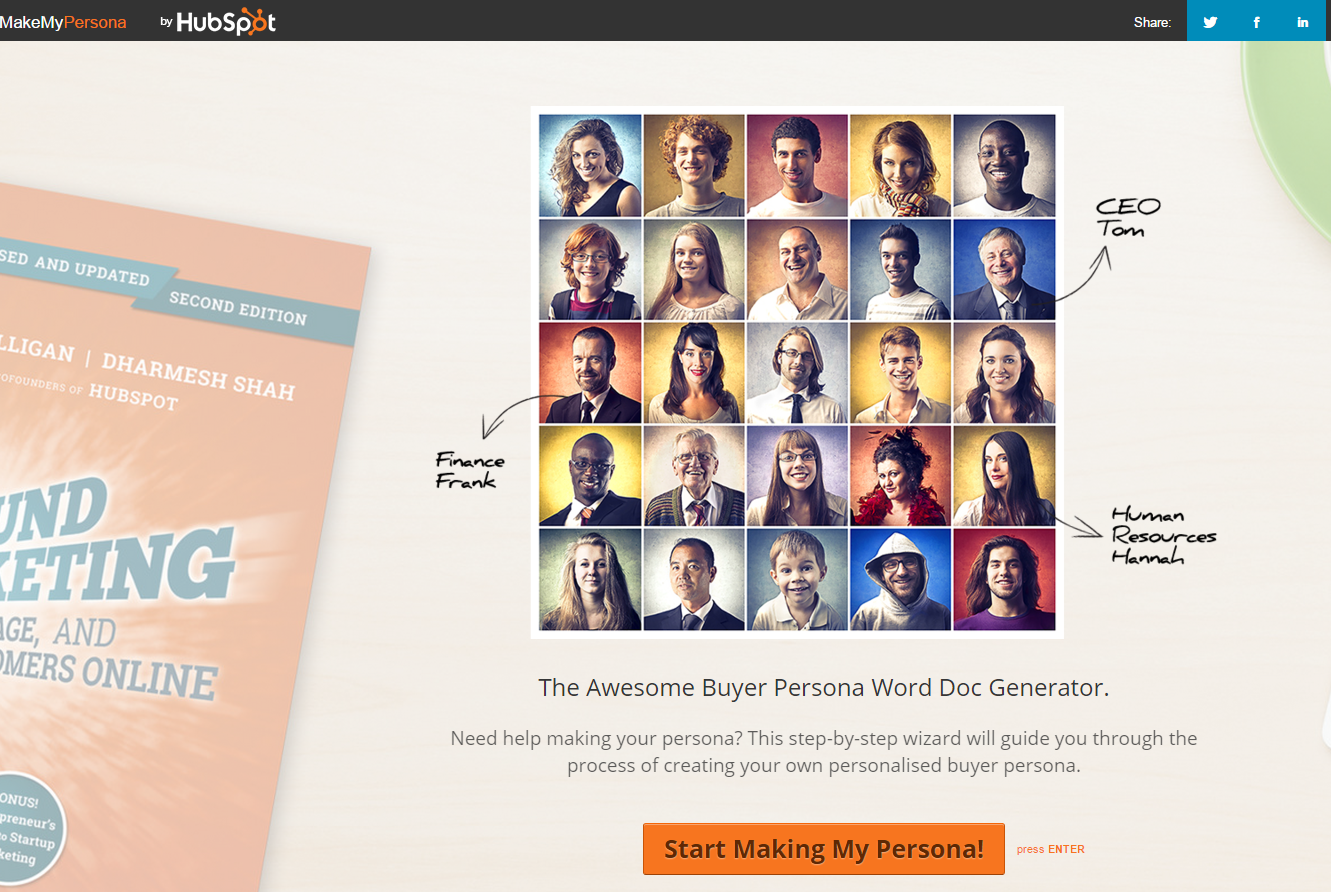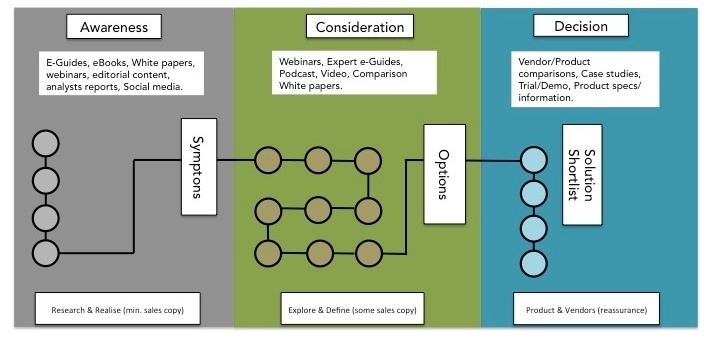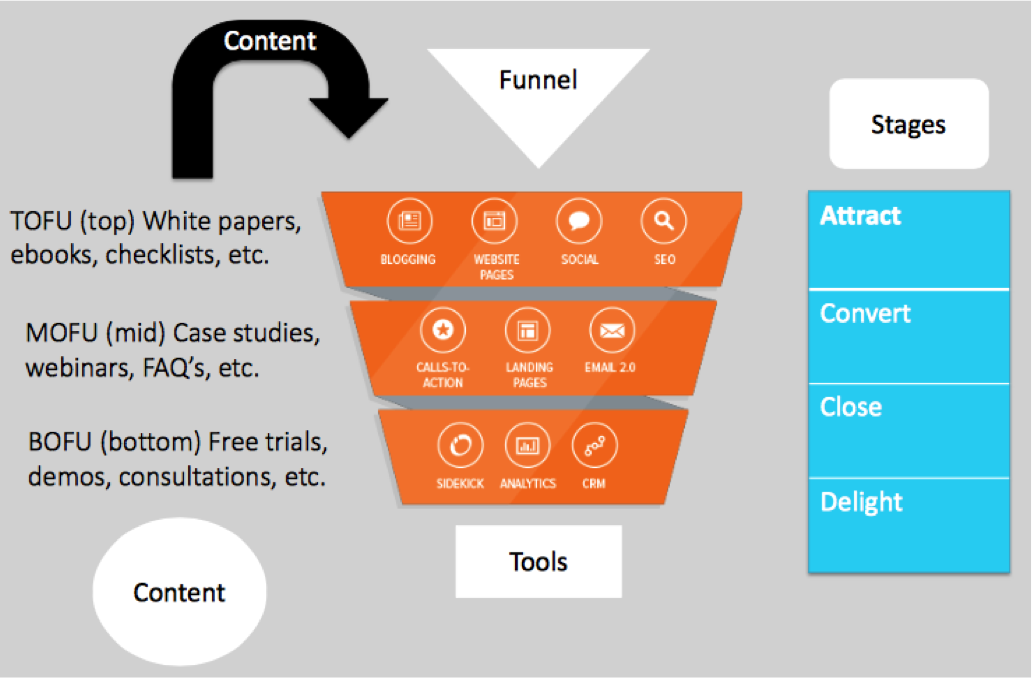“Seller beware” – Use our 19x point checklist to fire up your 2020 sales & marketing plans.

The internet has pretty much changed most things in our life today. With information just a click away, the buyer-seller relationship has been turned completely upside down with “seller beware” front of mind as the balance of power has changed.
Use our checklist to fine tune your B2B sales & marketing strategy.
In today’s market, 67% of the buyers journey is now done digitally and buyers actively seek to educate themselves or find recommendations primarily using online channels.
With so many different channels or ways to reach out to your customers, it can be a difficult task to know which particular digital channel contributes the most leads and where you should focus. And once you have worked out the channel do you know what is it that your visitors are searching for, how they want to interact and their digital preferences?
The whole decision making process has become longer and more complex, with buyers as much as 60% of the way along their buying journey before they take any direct sales contact with the added complexity of more stakeholders, more cost control, increased pressure on the ROI, etc.
The sales process for the technology industry can be especially long and complicated. It is difficult to know sometimes who is the ultimate decision maker (the buyer) compared to those that influence as stakeholders in the decision making process.
Whereas some companies may still take the view that visitors and sales prospects are just numbers in the sales funnel, the newly empowered B2B buyer is forcing companies to adopt a sales process to match the way they prefer to buy. This change in approach is reflected in showing buyers the desire to offer advice first and foremost rather than go for the sale at the earliest opportunity.
Most B2B purchases are still made by individuals, either alone or within a committee of stakeholders. So although targeting a particular message to this group may be more difficult than it has been, it is not impossible if you use the right approach, tools and timing.
The Changing B2B (Business-to-Business) Sales Process For Technology
With an evolving buying process there are a number of areas that companies need to be familiar with as they enter a sales process and start to engage with a customer:
- Understanding how the prospective customers think and process information
- Finding what alternative options they have to choose from
- The level of expertise or specialist knowledge in the sector as a whole
- What are the hot buttons that will trigger an action?
- Does the sector have any particular content consumption preferences or habits (you will need to know where to post/distribute your content in order to catch their attention)?
- Are there any particular digital touch points that you can influence or target?
- Can you explain clearly what the buyer’s pain is and how your product or service can help solve it?
A Changing Technology Sales Cycle.
In a recent survey, 74% of business buyers told Forrester they conduct more than half of their research online before making an offline purchase.
There are typically a number of obstacles that buyers face that as a technology company you need to be prepared for:
- The decision challenge – does the buyer have the competency to evaluate and compare your offering?
- Switching process – have you nailed all the areas that may be impacted by switching suppliers for example; the potential extra time, costs, resources, new technology, etc.
- VFM (value for money) – is the buyer qualified to measure the added value that your offer drives?
- Requirements – have you prepared an implementation list of employee training needs?
- A prioritised list of technology requirements to help the buyer select the right vendor based on their needs and requirements.
Recent research from Demand Gen B2B Buyers Survey Report 2016 found that the main sources of information that B2B buyers reference were taken primarily from their web search activities, vendor websites and insights from peers.
So how can you make sure that you are on the radar of your buyer at the same time that they need to know more? How can you attract rather than distract your audience?
The Bigger Digital Picture
Digital has enabled and empowered buyers to change the way that they consume content, engage with brands and research buying decisions. These changes have had a direct impact on the way that companies identify and target prospective customers.
The traditional way that companies segment customers now has to go beyond the typical demographic profile and source the deeper insight that comes from creating a buyer persona. This type of analysis can help plan for your persona the content that they will need depending on where they are in the buying lifecycle (as per below from HubSpot).

Developing a buyer persona is a great learning experience as well, especially for those who are starting out or are new to marketing.
The Challenge
Reaching and converting an audience with content marketing is becoming harder to do. With so much content, distributed over so many fragmented channels, new devices, platforms and mediums it has made it much easier for readers to be selective on the content they consume.
If marketing has one goal, it’s to reach an audience at that one moment in their buying journey when there is an opportunity to influence. Marketing has always sought to create, identify and influence these “moments of truth”, or touch points.
We have put together a checklist of 19x marketing and sales actions to help you develop a strategy to generate, nurture and activate your leads.
Building Your Approach To Marketing
1) What Is Your Customer’s Pain?
It could be that the buyer themselves is not clear on the symptoms they have to be able to identify their own problem. Everything we buy is bought for a reason, so unless you know the pain, how can you truly help and tailor your approach to address the challenges facing your buyer?
The complex nature of today’s buyer journey, with increasing touch points across multiple channels and devices can make it a challenging experience. In order to get found online and gain influence you really need to do your research on the challenges and problems facing your customers so that you can target the right type and format of content.
2) Drawing Up A Buyer Persona
A buyer persona is a semi-fictional representation of your ideal customer based on various data sources from market research, to existing customer insights and informed assumptions. By creating a persona you should be able to visualise what these prospective customers are thinking and doing as they weigh up various purchase options.
Defining your buyer personas is essential to personalising the sales process for today’s empowered buyer (see below example from HubSpot).

To make your buyers’ needs the focus of your marketing strategies and tactics, avoid these three common mistakes:
1. Don’t get too personal – the focus should be on how the buyer makes a decision
2. Stop basing your analysis on a “gut feeling”
3. Don’t develop too many buyer personas
Personas can be powerful marketing tools to inform decisions, guide strategies, improve customer experience and enhance collaboration across your business.

3) Define Your Buyer’s Journey
Now you need to address your customer’s pain. Buyers don’t want to be prospected, nurtured or closed at these early stages of the relationship, especially if you are not adding value outside what they have already researched.
An important step for developing an inbound perspective is to know how to attract rather than chase customers, by defining your buyer’s journey.
A few simple questions to ask yourself when you are formulating a buyers journey are:
- Buyer Stage – at what stage are your leads; Awareness, Consideration or Decision?
- What information needs do your prospects have?
- For this type of buyer persona, do they have a preferred way to interact digitally?
To understand how to connect your content to your buyer’s needs you need to lay out their buying lifecycle stages (the Buyer’s Journey – see below).

This approach can be used to assess what type of content your buyer personas need depending on what stage they are at.
For example, maybe they are at the beginning and need to be aware only that they have an issue that needs to be addressed rather than your company trying to sell a solution too early.

4) Undertake Individual Customer journey Mapping
To get a positive return on your sales and marketing efforts you’ll need to offer value and a memorable customer experience (CX). Providing advice and added value to prospects regardless of whether they’re ready to buy, builds credibility and authority in what you say.
To be able to learn how to enhance the customer experience it is necessary to combine your buyers persona profile and a carefully mapped out customer journey.
Viewing the journey from a customer’s perspective, to understand what they would like to receive compared to the experience they get, enables your company to spot the gaps.
Removing these inefficiencies not only improves the experience, it may also save the company money and increase revenue in the long run.
5) Analyse The Sales Funnel
The traditional sales funnel maps the journey a person takes from a prospect to customer. Although it is typically called a sales funnel, it has always been a joint effort with marketing at the heart of the funnel.
The concept of the classic sales funnel dates back centuries and offers a simple metaphor to think about the path a customer takes. It is a journey initiated by the marketing effort to attract leads into the top of the funnel, then sales focuses on converting prospects toward a purchase as they progress down the funnel.

Nowadays travelling along the funnel is not a simple linear process and prospects may move around as they pass through the different stages of their buying cycle. Leaving and entering the funnel at different stages.
6) Identify The Buying Triggers
An empathy map is a tool that your team can collaborate on to gain deeper insight into it’s customers. Empathy mapping can help you identify the pain and gain from a rational and emotional perspective of the buyer’s decision making. It can help source keywords for example that you could use in your content.
7) Develop Your Online Value Proposition
It is important to develop a habit of continually examining and reassessing your value proposition to make sure it fits the demands of the marketplace. Sometimes you may need to adjust your value proposition to take advantage of an opportunity or to react to a competitor or new entrant to your market.
Ask yourself:
- What do you identify as your unique differentiators?
- Can you measure and identify your value points?
- Do your have insight on whether buyers value the things that make you different from your competitors?
8) Agree Your SMART goals
What are your goals? Make sure you’re setting SMART goals for your business that are specific and measurable. For example: “X% increase in sales leads this month” “SMART” stands for:
- Specific
- Measurable
- Attainable
- Realistic
- Timebound
You can’t grow what you can’t measure.
9) Understanding The “Search intent” Of Your Visitors
Google commissioned Millward Brown Digital to do research on searcher intent, and saw marketers could be missing as much as 70 percent of potential mobile shoppers by not understanding what they’re searching for at any given time.
To get the most out of your search strategy you need to understand the type of searches you receive;
- Navigational Queries – Searches for the name of a specific company, or for a specific website homepage (low value)
- Information Queries – These are the basic, persistent questions of “how” queries (mid value)
- Transactional Queries – These can include the classic “buy” searches i.e. product specs, forms, etc. (high value)
10) Being Found Online
There are a number of methods that can be employed to make sure your company has a good chance of ranking well for search:
- Undertake Keyword research to help develop your organic search strategy and performance
- Optimise your SEO efforts to help your website rank higher in organic (or “natural”) search results, thus making your website more visible to people who are looking via search
- Use an attribution model to assign credit to the touch points of how website visitors converted from a stranger to become a contact
- Use Google Analytics for insights on the visitors to your website. This includes the new visitors, the time they spend on the site, the number of pages they visit as well as the source from where they access your website
11) Content Strategy & Planning
Content strategy focuses on the vision of how and why your content will be created, planned and managed. Content marketing focuses on the tactics and getting things done.
For your sales and marketing to be successful it relies in a big way on content creation. Prospects need validation that you are trustworthy, knowledgeable and an industry authority.
It is a world where “content marketing rules”, buyers are more likely to trust other sources of information than your own. So you need to make sure that you distribute your content effectively and that it is good enough to be shared and distributed amongst your target audience.
Building Your Approach To Sales
12) Educate, Don’t Sell.
Helping is the new selling.
The most successful salespeople are the ones who aren’t viewed as salespeople. The effort needs to focus on not just chasing down a sale but by adding value through sharing knowledge that the end user can use to their benefit.
13) Develop A Supportive Sales Process
Once the buying journey is defined, the next step is to build a sales process. The inbound sales process (as defined below by HubSpot) should support the buyer through their purchasing journey. As a result, salespeople and buyers feel aligned through the buying and selling process, as there is less pressure to buy and more opportunity for dialogue.
14) Don’t Start The Dialogue With “What is your budget?”
Before the relationship starts to grow, is it really necessary to know about budget up front anyway? If you have done adequate research you will know if they have bought something similar in the past or fit the profile of buyer who would.
Instead of demanding a budget figure try to understand your contacts buying strategy, what are the typical obstacles or considerations taken into account in a sales process.
15) Identify Buyers That Are A Good Fit.
Many buyers have already entered the awareness stage of the buying journey before they engage with salespeople and as an active buyer these should be targeted first.
Active buyers may have recently visited the company website, filled out a form, opened an email, or signed up for something that shows that they have an interest.
Before you can identify potential buyers, you need to define which buyers you can help and which buyers you can’t, the ideal buyer profile should be used to defines which buyers are a good or bad fit .
16) Learn The Behaviour Of Your Buyers.
If you are going to know when is the right time, or what triggers to look for when your customer is ready to buy, you will need to use your buyer personas research to segment and learn their behaviour, digital preferences and levels of interaction that they prefer.
17) How To Become Buyer-Centric In Your Sales Approach
Use our checklist below to see what additional tactics you can add to your sales strategy to always put the customer at the forefront of everything that you do:
- Are you using the right content type and format to educate and advise this persona?
- Have you set up lead scoring to manage your contact data base?
- Do you have workflows in place for your marketing automation system?
- Do you use social selling to develop a position of trust and authority in the market?
- Are you working together with marketing to nurture leads and learn how to recognise the signs for when prospects are ready to engage?
- Do you have a sales CRM tool to manage and record your actions?
18) Questions Not To Ask Too Early On
You will be able to work out over time how to engage and build a strong relationship with your customers and prospects, but there are some quick lessons that can be learned on what questions to avoid too early on in the relationship:
- Are you the decision maker?
- How strategic a company are you?
- Would you like me to send in a proposal or quote?
- Would you like me to do a presentation?
- Ring and ask is this a good time to chat?
- What will it take to earn your business?
- Can you tell me about your business?
19) How To Start An Engaging Conversation
- Ask permission – it’s good manners to show respect by asking permission to ask questions
- Start broad, and then get specific – open-ended questions are a good way to start gathering information and put your prospect at ease
- Build on previous responses – and on your research on how to direct the conversation
- Keep the questions simple
- Keep questions non-threatening – take the pressure off
- Focus on desired benefits based on your understanding of their needs
- Maintain a consultative attitude, exude a relaxed tone of voice and wait for responses
- Don’t be in a hurry to get to your next appointment
Take Away
Craft your marketing or sales approach based on your research plus the responses to our 19x point checklist above.
Remember when you are with a customer think of it as a chat with a friend, where you will have numerous questions and advice to give and want nothing in return – apart from that lawn mower you lent them last summer but have not seen since 🙂
If you want to learn more about the inbound methodology and how it can impact your sales and marketing efforts get in contact today.
